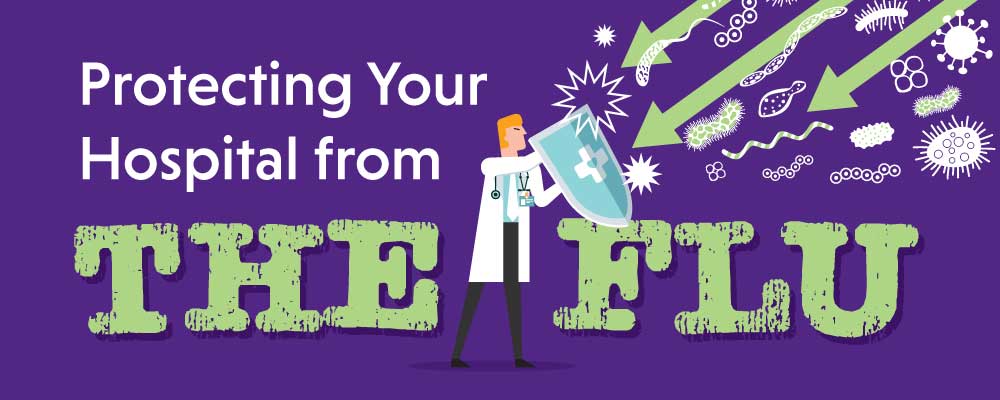While some may welcome the transition from Spring to Fall with pumpkin-spiced lattes and cozy sweaters, many are wary of the other season that follows: flu season.
Last year at Eisenhower Health, we experienced one of the worst flu seasons due to its longevity. The U.S. Centers for Disease Control and Prevention (CDC) documented 42.9 million cases of the flu, resulting in 61,200 deaths from October 1, 2018 to May 4, 2019. Scientists have yet to develop a vaccine that can combat every strain of the flu, but recent discoveries about the virus’ behavior have helped create more ways to prevent it from spreading. With this recent breakthrough, researchers recommend making this slight lifestyle adjustment that could potentially save thousands of lives in the future.

The Breakthrough
Based on this study conducted by Harvard Medical School graduate, Dr. Stephanie Taylor, her and her team concluded that the leading cause for viral infections was dry air. This is detrimental to us for two reasons: our immune system is weakened and bacteria/viruses can survive for longer periods of time. Scientists were led to believe that these microbes die under this environment after a certain amount of time; however, it has been recently discovered that they simply shrink in size due to the moisture in them getting evaporated. With the help of newer technology, Dr. Taylor deduced that these microbes remain dormant until rehydrated.
Humans consist of about 60% water, making us the ideal breeding grounds for dormant bacteria and viruses. Upon landing on our exposed skin, they are able to rehydrate and infect the body with newer versions of themselves. It is especially devastating for indoor buildings that circulate this dry air throughout all of the floors, making every single person susceptible to the aerial viral infection.
What We Know
This could be particularly harmful for hospitals because the goal is to reduce the risk of infection for patients and healthcare providers, but Dr. Taylor did find a simple and inexpensive solution to the problem. She recommends indoor environments maintain a 40-60% relative humidity, dubbed as the “sweet spot,” which can be obtained by using a humidifier and hygrometer. For hospitals, areas most susceptible to flu transmissions would be the ICU and operation rooms. By increasing the humidity, this can make all the difference during flu season, typically late spring/early fall, and is gradually being accepted as a preventive step against infection by the scientific community.
Other Preventative Steps
It is possible to affect other people with the flu before you develop the symptoms. The period of contagiousness may begin 1 day before symptoms develop and last another week after becoming sick. In regards to preventative care, it is best to get a flu shot before flu season comes in full force because it takes the body up to 2 weeks to create the necessary antibodies to fight the viral infection. Routinely cleaning surfaces you frequently touch with antibacterial wipes prevents existing germs from spreading around. Washing your hands for 20 seconds with soap and warm water is another way to rid yourself of germs that may be hiding under our fingernails and dead skin. As always, it is good to cough and sneeze into your elbow, and avoid physical interaction with people who have the cold or flu.
Eisenhower Health prides ourselves for maintaining the health of both our patients, nurses, and doctors. If you’re a nurse passionate about public health, join our team by visiting our Career page for current job listings.
Originally posted on 11/25/2019



